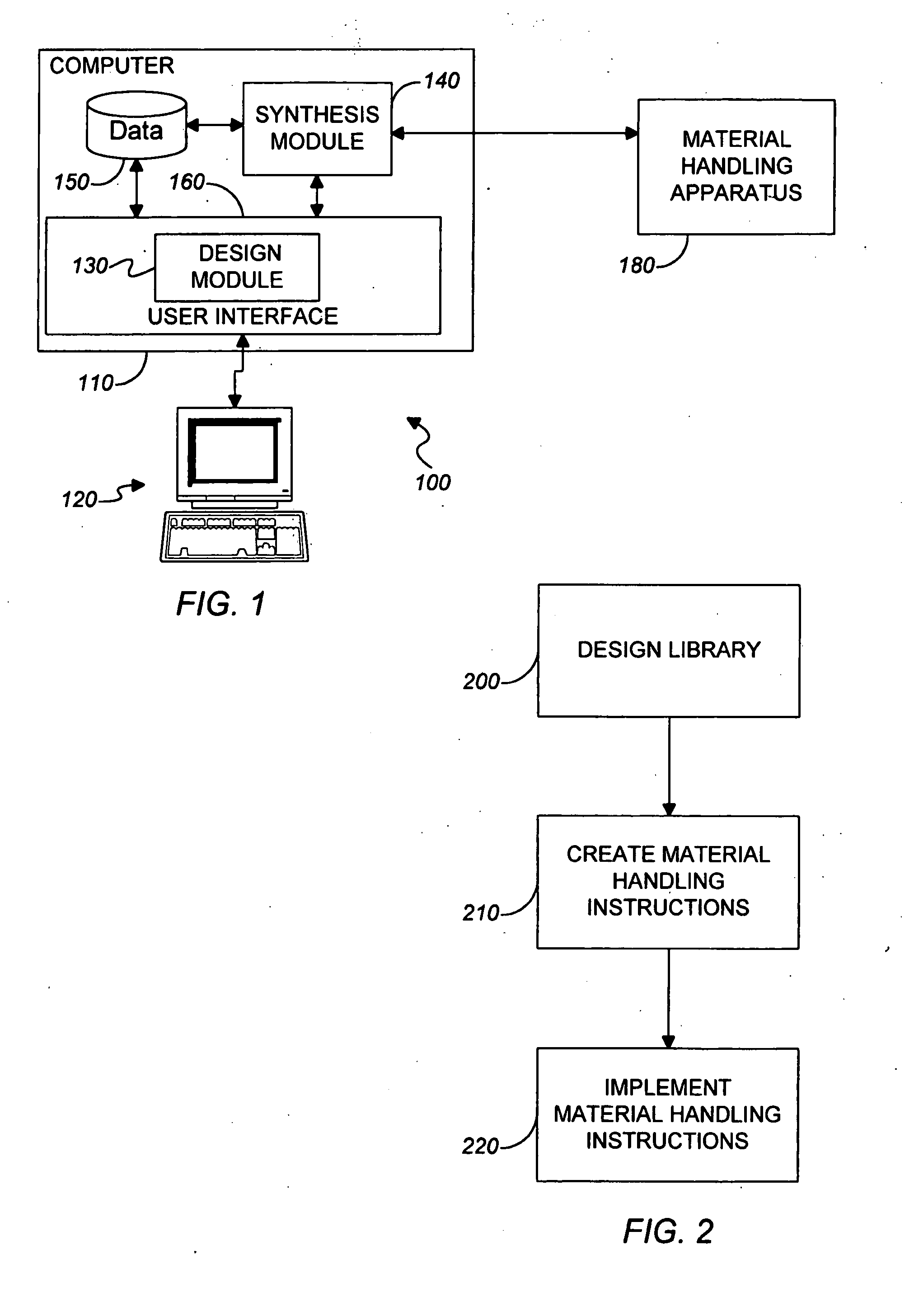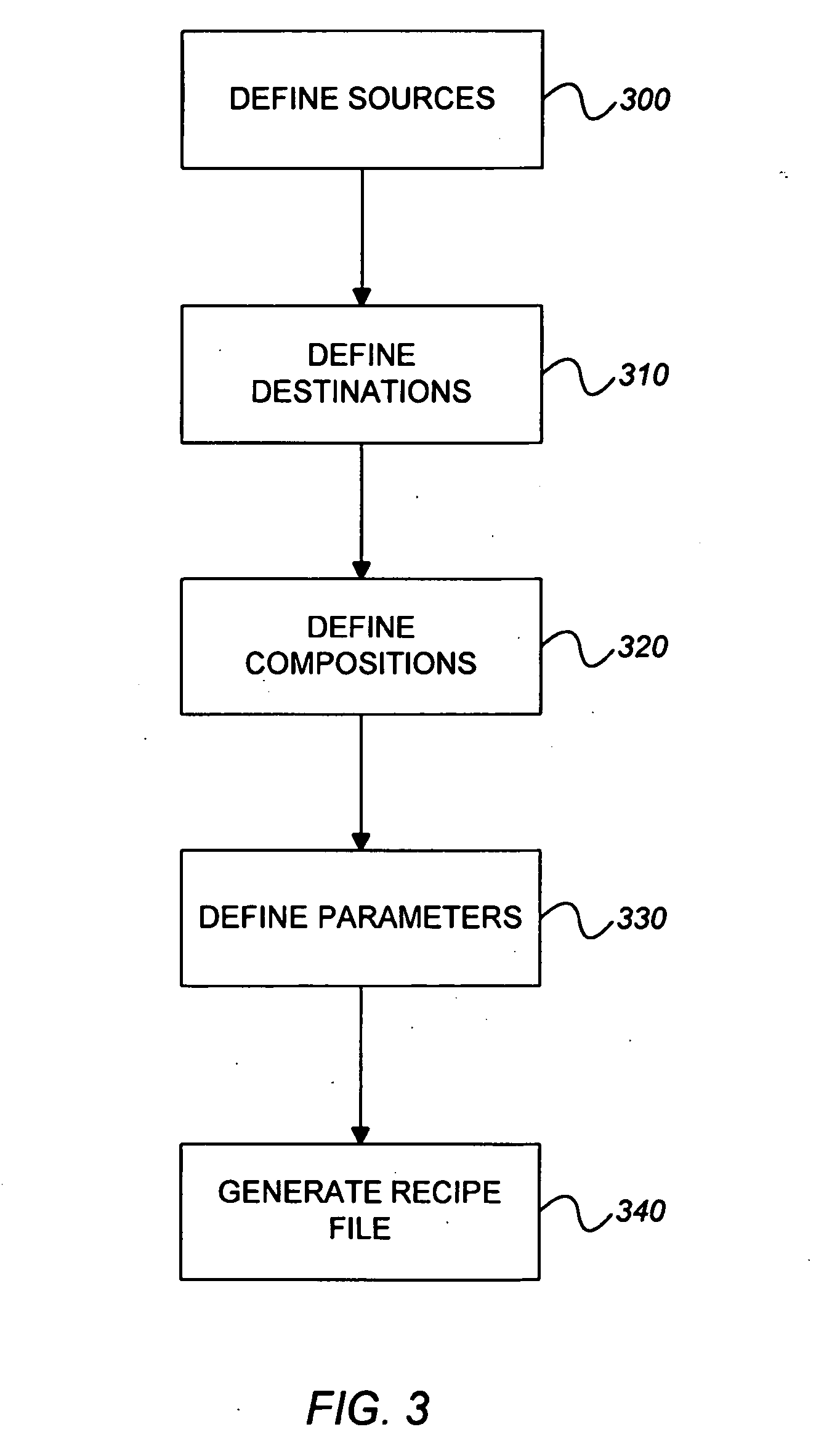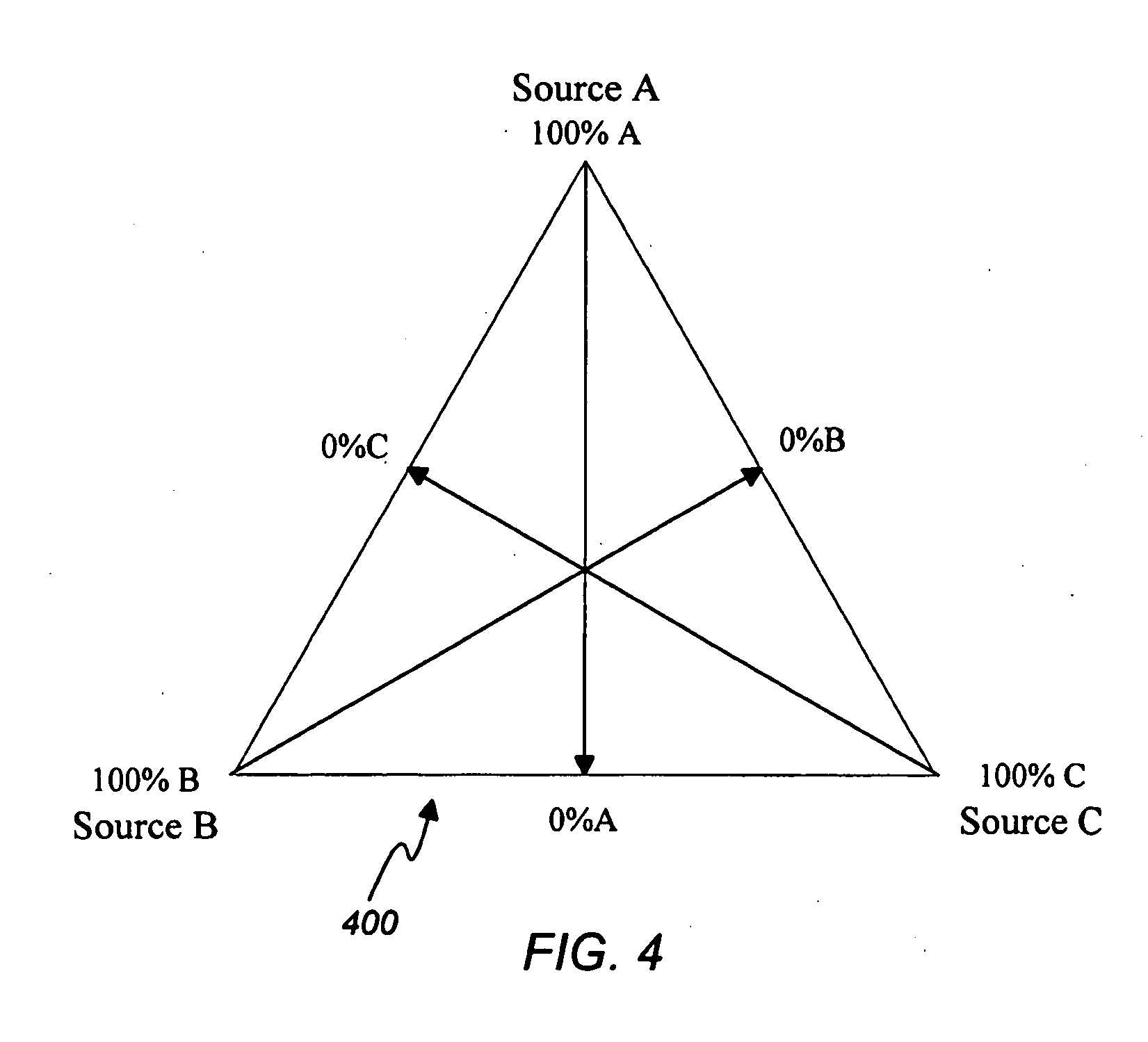Graphic design of combinatorial material libraries
a technology of combinatorial materials and library, applied in the field of computer-implemented design of combinatorial materials library, can solve the problems of low success rate, long time lines, high cost,
- Summary
- Abstract
- Description
- Claims
- Application Information
AI Technical Summary
Benefits of technology
Problems solved by technology
Method used
Image
Examples
Embodiment Construction
[0044] As shown in FIGS. 1 and 2, a system 100 includes a computer 110 equipped with input / output devices 120. A typical user of system 100 is a chemist. Through user interface 160, the user initializes system 100 and generates a library design for a combinatorial library of materials using design module 130 (step 200). As used in this specification, a combinatorial library is a collection of two or more members that contain some variance in chemical composition, chemical amount, reaction conditions, and / or processing conditions, where a member is a single position in a library containing one set of chemicals subject to one set of reaction or processing conditions.
[0045] Based on the library design, design module 130 creates a set of material handling instructions, which may take the form of a data file or “recipe file” (step 210), which may be provided to synthesis module 140 (step 220). Synthesis module 140 implements the instructions, by causing material handling apparatus 180 t...
PUM
| Property | Measurement | Unit |
|---|---|---|
| temperatures | aaaaa | aaaaa |
| composition | aaaaa | aaaaa |
| compositions | aaaaa | aaaaa |
Abstract
Description
Claims
Application Information
 Login to View More
Login to View More - R&D
- Intellectual Property
- Life Sciences
- Materials
- Tech Scout
- Unparalleled Data Quality
- Higher Quality Content
- 60% Fewer Hallucinations
Browse by: Latest US Patents, China's latest patents, Technical Efficacy Thesaurus, Application Domain, Technology Topic, Popular Technical Reports.
© 2025 PatSnap. All rights reserved.Legal|Privacy policy|Modern Slavery Act Transparency Statement|Sitemap|About US| Contact US: help@patsnap.com



